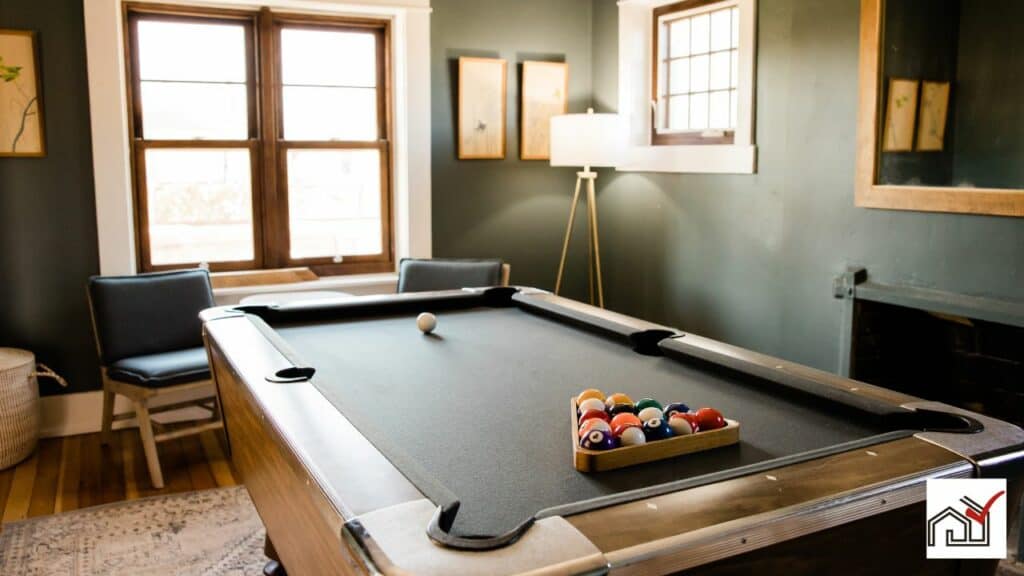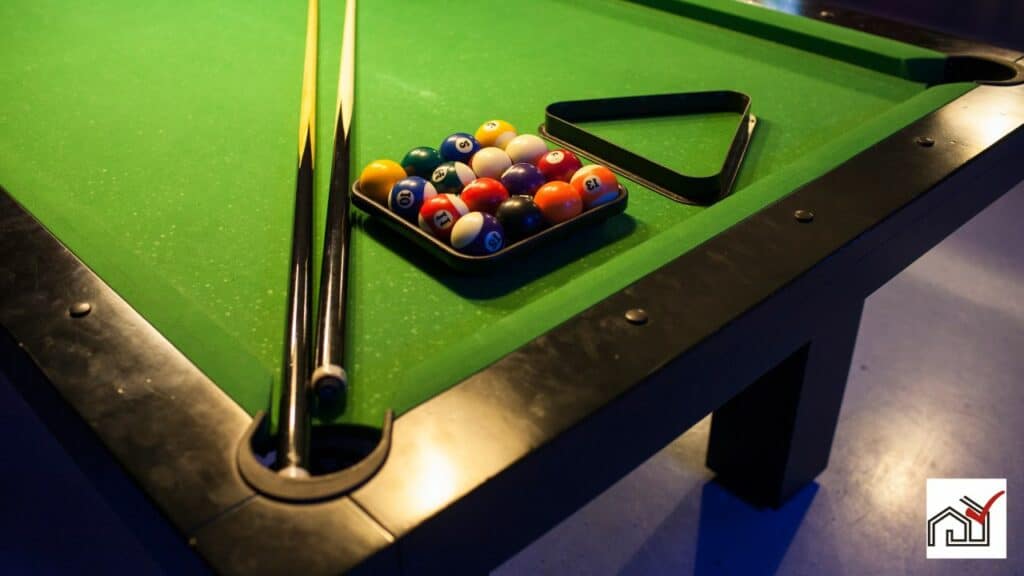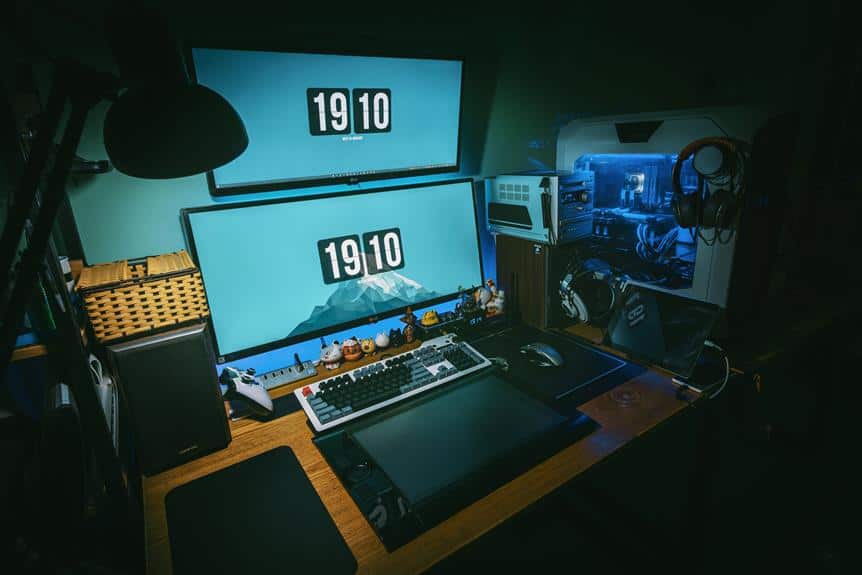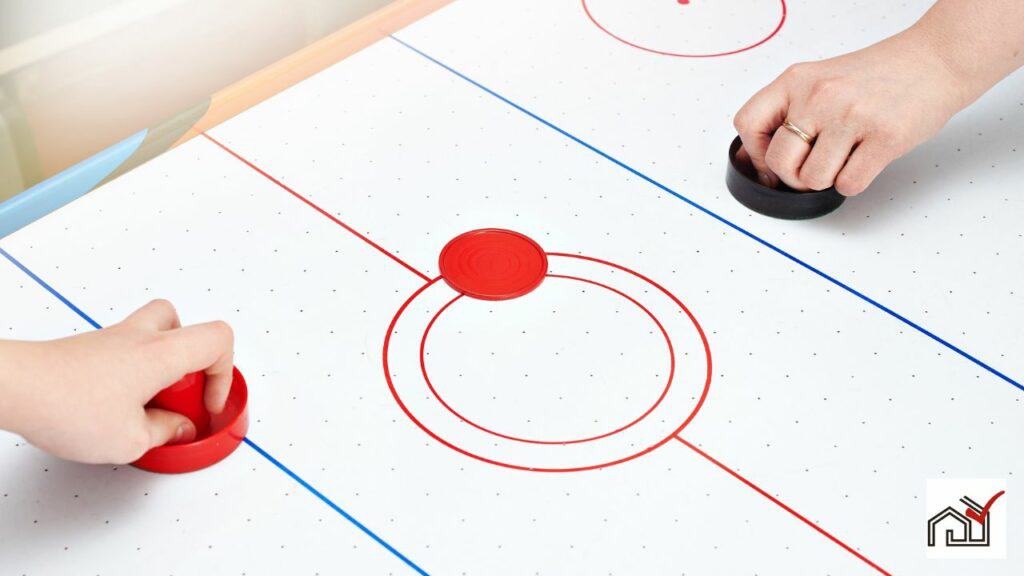The size of a game or rec room should be based on the activities you plan to have and the equipment needed. For example, a pool table requires at least 5 feet of clear space around it. Table tennis and foosball tables also have specific space requirements.
When planning the room, consider space for walking, seating, and storage to create a functional and pleasant environment. Proper planning helps ensure the room is both useful and welcoming.
Determining Functional Needs
In creating a game or recreation room, it is important to allocate enough space for each activity to ensure the room is functional and comfortable. The required space for each element is determined by its functional needs.
For pool tables, a 7-foot table requires at least 5 feet of clear space around it to allow for cue usage and player movement. Therefore, the room must be larger than the table itself to be usable for playing pool.
For table tennis, a recommended space of about 300 square feet is needed. This includes at least 7 feet of clear space at each end and 4 feet on each side to allow players sufficient room to move and play effectively.
A foosball table, while smaller, still needs a playing area of 48 inches by 27 inches, with an additional 8 inches on the long sides to accommodate the handles.
Chess and checkers game tables require less space but should still fit comfortably in the room. Typically, the tables are slightly larger than a 24-inch square game board.
Air hockey tables need a room size of at least 10 feet by 5 feet for a 6-foot table and 14 feet by 8 feet for an 8-foot table, ensuring players have enough space to play comfortably.
Assessing Available Space
Assessing available space is crucial when designing a game or recreation room as it determines the possible types and amounts of gaming setups. Begin by measuring the room's square footage to guide all subsequent planning. In small spaces, prioritize essential games and activities due to space constraints. Each game table needs space for play and additional room for player movement.
Consider the size requirements for common game tables such as pool, table tennis, and foosball. For example, a standard pool table typically needs a room of at least 17 by 13.5 feet, including space for cues. In smaller rooms, use corners wisely or opt for foldable furniture to use space efficiently.
For reduced noise disruption, place game or rec rooms away from main living areas. An outer area of the home is suitable for a game room that doesn't affect daily life in central spaces. Accurate measurements and a practical evaluation of needs and constraints are key to creating a functional game or rec room.
Calculating Space Per Activity
Each gaming activity requires a specific amount of space for comfortable and safe play. A pool table should have at least 5 feet of clear space around it and a vertical clearance of 30 inches. This allows players to move and use their cues without obstacles.
Table tennis players need a minimum of 7 feet of clear space at the ends of the table and 4 feet at the sides. For foosball, ensure there is an extra 8 inches on the long sides of the table for the handles.
Chess and checkers tables should be 2 to 6 inches larger than the board to provide space for hands and piece movement. Air hockey tables need significant space: a 6-foot table requires a room size of at least 10 feet by 5 feet, and an 8-foot table needs a room size of 14 feet by 8 feet.
Video games require less space but still need adequate room for seating and movement, particularly for interactive and virtual reality games. Proper space planning is critical for an enjoyable and safe gaming experience in a game room.
Considering Comfort and Flow
Optimizing space in a game or recreational room is important for comfort and usability. Each area should be designed for its specific use. It's not just about looks, but about practicality and ease of movement for people in the room. For example, pool tables should have at least 5 feet of space from their long sides to walls or other obstacles to allow for unobstructed play.
Creating separate zones for different activities can improve the room's organization and prevent it from feeling overcrowded. This also helps to keep activities from interfering with each other.
Soundproofing is important in a game or rec room to enhance the gaming experience without disturbing other parts of the home. Adjustable lighting is also crucial to set the right mood and ensure visibility for various activities.
Choosing the right flooring is another key consideration. Durable materials like laminate or vinyl are easy to maintain and add to the room's functionality and look.
Planning for Storage Solutions
Effective storage is essential in a game or recreation room to maintain order and provide enough space for game tables and activities. The size of game tables such as pool, table tennis, and foosball determines the necessary space for both playing and storing related items.
Storage in a recreation room must be flexible to hold different items like cues, paddles, and balls in an organized and accessible manner. A combination of cabinets, shelves, and closets can be used to allocate a specific place for every item, which helps to minimize clutter.
Adjustable shelves or modular units are useful for storing game accessories of various sizes and shapes. The storage design should also match the room's decor to create a welcoming environment.





